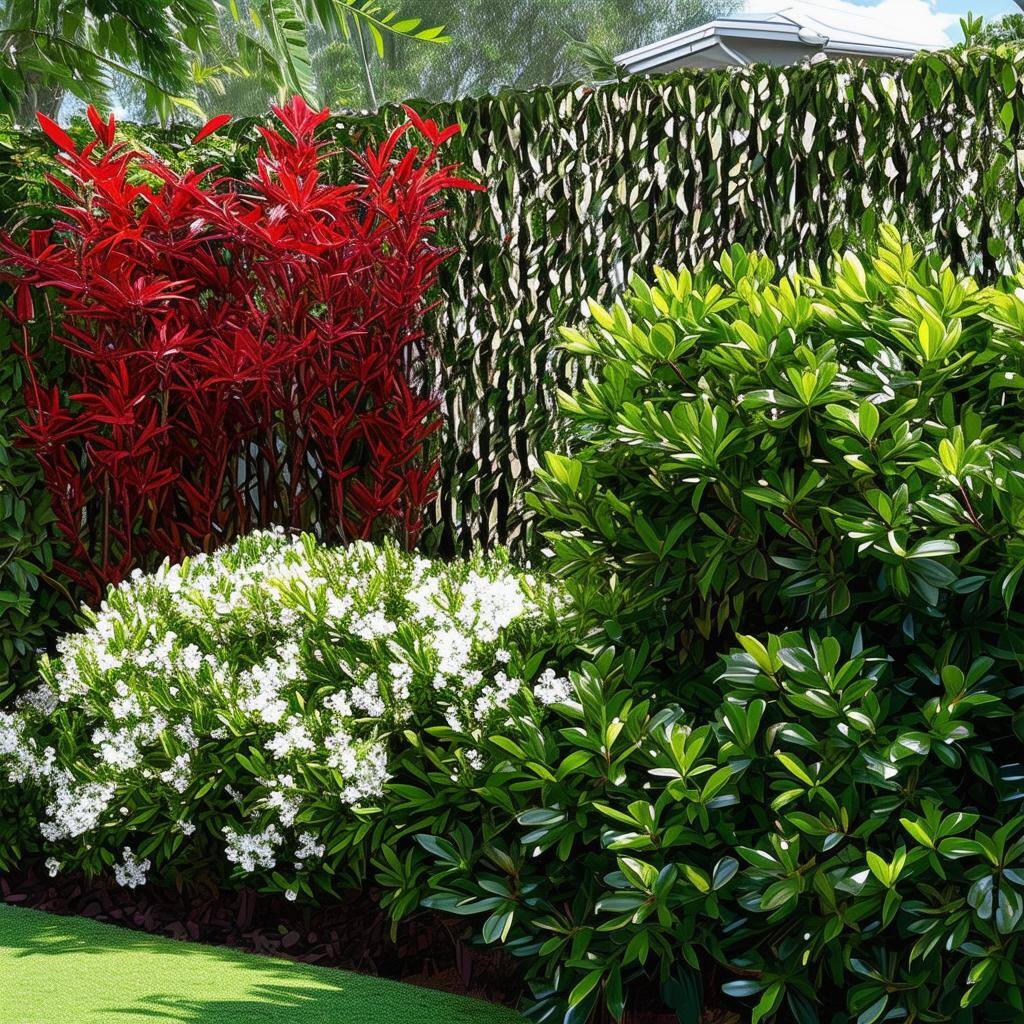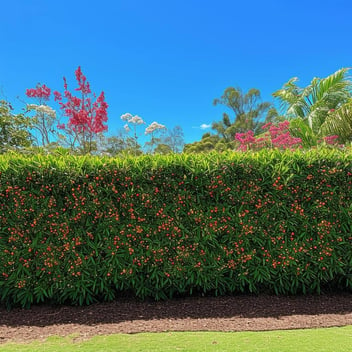Hedging Heroes: Shrubs That Double as Privacy Screens in SEQ
In the lush landscapes of South East Queensland (SEQ), creating a private sanctuary within your garden is both desirable and achievable. Utilizing shrubs as natural privacy screens not only offers seclusion but also enhances the aesthetic appeal of your outdoor space. This article explores top shrub choices and essential considerations for establishing effective green barriers in SEQ.
Understanding the Need for Privacy Screens in SEQ
As urban development intensifies in SEQ, homeowners increasingly seek ways to maintain privacy without compromising on beauty. Natural privacy screens serve multiple purposes:
-
Seclusion: Dense foliage creates a visual barrier, offering a sense of retreat.
-
Noise Reduction: Thick plantings can dampen urban sounds, contributing to a tranquil environment.
-
Environmental Benefits: Shrubs improve air quality, provide wildlife habitats, and contribute to local biodiversity.
Key Characteristics of Effective Hedging Shrubs
When selecting shrubs for privacy screens, consider the following attributes:
-
Dense Foliage: Ensures an effective visual barrier year-round.
-
Fast Growth: Accelerates the establishment of the screen.
-
Climate Adaptability: Tolerance to SEQ’s subtropical conditions, including heat and humidity.
-
Low Maintenance: Requires minimal pruning and care once established.
Top Shrubs Serving as Privacy Screens in SEQ
Here are some exemplary shrubs that excel as natural privacy screens in SEQ:
Lilly Pilly (Syzygium species)
A quintessential Australian native, Lilly Pillys are celebrated for their rapid growth and dense, glossy foliage. They produce small, edible berries and can be pruned to maintain a desired height and shape, making them ideal for formal hedges.
Murraya (Murraya paniculata)
Commonly known as Orange Jasmine, Murraya boasts fragrant white flowers and lush green leaves. This hardy shrub thrives in SEQ’s climate and forms a dense hedge, providing both privacy and olfactory delight.
Pittosporum (Pittosporum tenuifolium)
With its attractive variegated foliage, Pittosporum adds visual interest while serving as an effective screen. It adapts well to different soil types and can be shaped into formal or informal hedges, offering versatility in garden design.
Photinia (Photinia robusta)
Notable for its striking red new growth that matures to a glossy green, Photinia is a robust shrub suitable for hedging. It grows quickly, allowing for the rapid establishment of a privacy screen, and responds well to pruning.
Viburnum (Viburnum odoratissimum)
Featuring large, leathery leaves, Viburnum forms a thick barrier ideal for screening. It grows rapidly and can reach substantial heights, effectively providing privacy and reducing noise pollution.
Planting and Maintenance Tips
To cultivate effective hedges, consider the following practices:
-
Optimal Spacing: Plant shrubs at intervals that allow them to grow together seamlessly, forming a continuous barrier.
-
Pruning Techniques: Regular trimming encourages bushier growth and maintains the desired shape and height of the hedge.
-
Pest and Disease Management: Monitor plants for signs of stress or infestation and address issues promptly to maintain plant health.
Design Considerations for Hedging
When designing your hedge, reflect on:
-
Formal vs. Informal Hedges: Decide between a neatly clipped, uniform appearance or a more relaxed, natural form based on your garden’s style.
-
Incorporating Flowering Shrubs: Select species that offer seasonal blooms to add color and interest to your privacy screen.
-
Balancing Aesthetics with Functionality: Ensure the chosen shrubs complement existing landscape elements while effectively providing privacy.
Conclusion
By thoughtfully selecting and maintaining appropriate shrubs, SEQ homeowners can create lush, effective privacy screens that enhance both the functionality and beauty of their gardens. Embracing these natural barriers fosters a harmonious balance between seclusion and environmental stewardship.




